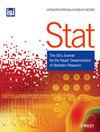不规则间距金融回报的分层建模
IF 0.7
4区 数学
Q3 STATISTICS & PROBABILITY
引用次数: 0
摘要
波动性建模在金融领域至关重要,尤其是在处理日内交易级资产回报时。数据的不规则性和高频性带来了独特的挑战。随机波动率(SV)模型被广泛用于理解构成有规律间隔时间序列的每日股票收益率的波动模式,而分析无规律间隔的盘中数据的波动率则必须引入新的模型类别。具体来说,这些模型必须考虑到连续交易事件之间的随机间隙。通过使用自回归条件持续时间(ACD)模型对间隙进行建模,我们描述了一种分层不规则 SV 自回归条件持续时间(IR-SV-ACD)模型,用于估计和预测交易间隙以及对数收益率的波动性。我们使用 cmdstanr 软件包,在贝叶斯框架下通过汉密尔顿蒙特卡罗(HMC)算法和无转向采样器(NUTS)进行分析。拟合和预测是通过基于后验样本的蒙特卡洛平均值获得的。我们使用纽约证券交易所(NYSE)交易的健康股票微秒级盘中价格的模拟研究和真实数据分析来说明这种方法。我们计算了这些股票的对数收益率和缺口,并将其用于建模。本文章由计算机程序翻译,如有差异,请以英文原文为准。
Hierarchical modeling of irregularly spaced financial returns
Volatility modeling is crucial in finance, especially when dealing with intraday transaction‐level asset returns. The irregular and high‐frequency nature of the data presents unique challenges. While stochastic volatility (SV) models are widely used for understanding patterns in volatility of daily stock returns which constitute regularly spaced time series, new classes of models must be introduced for analyzing volatility in irregularly spaced intraday data. Specifically these models must accommodate the random gaps between successive transactional events. By modeling the gaps using autoregressive conditional duration (ACD) models, we describe a hierarchical irregular SV autoregressive conditional duration (IR‐SV‐ACD) model for estimating and forecasting intertransaction gaps and the volatility of log‐returns. We carry out the analysis in the Bayesian framework via the Hamiltonian Monte Carlo (HMC) algorithm with No‐U‐turn sampler (NUTS) in R using the cmdstanr package. The fits and forecasts are obtained using Monte Carlo averages based on the posterior samples. We illustrate this approach using simulation studies and real data analysis for intraday prices available at microseconds level of health stocks traded on the New York Stock Exchange (NYSE). The log‐returns and gaps are calculated for the stocks and are used for modeling.
求助全文
通过发布文献求助,成功后即可免费获取论文全文。
去求助
来源期刊

Stat
Decision Sciences-Statistics, Probability and Uncertainty
CiteScore
1.10
自引率
0.00%
发文量
85
期刊介绍:
Stat is an innovative electronic journal for the rapid publication of novel and topical research results, publishing compact articles of the highest quality in all areas of statistical endeavour. Its purpose is to provide a means of rapid sharing of important new theoretical, methodological and applied research. Stat is a joint venture between the International Statistical Institute and Wiley-Blackwell.
Stat is characterised by:
• Speed - a high-quality review process that aims to reach a decision within 20 days of submission.
• Concision - a maximum article length of 10 pages of text, not including references.
• Supporting materials - inclusion of electronic supporting materials including graphs, video, software, data and images.
• Scope - addresses all areas of statistics and interdisciplinary areas.
Stat is a scientific journal for the international community of statisticians and researchers and practitioners in allied quantitative disciplines.
 求助内容:
求助内容: 应助结果提醒方式:
应助结果提醒方式:


